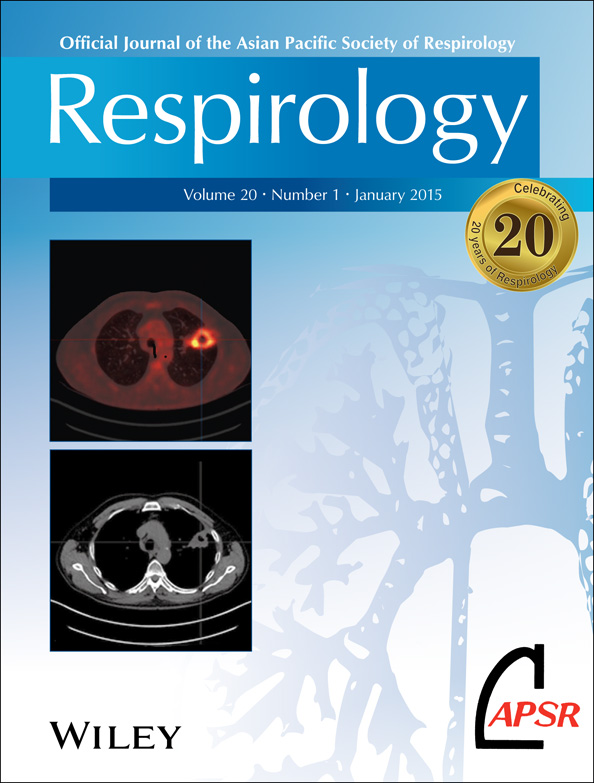Drug development for chronic lung disease - Mission impossible?
Abbreviation
-
- CLD
-
- chronic lung disease
Chronic lung diseases (CLD) cause substantial morbidity and mortality and are associated with high health-care costs. The understanding of molecular mechanisms associated with CLD has increased dramatically over the past 30 years, and this has resulted in the completion of several successful clinical trials in disease areas that were considered as ‘mission impossible’ before, such as idiopathic pulmonary fibrosis.1, 2 Nevertheless, for most patients with CLD, we still do not have satisfactory treatment options, and available treatments are largely aimed at symptom reduction as opposed to inhibition of underlying disease mechanisms. The reasons for the lack of therapeutic success in CLD are multifactorial. They range from basic questions (e.g. understanding mechanisms of chronic disease, target identification and compound screening using high-throughput tools) to translational and clinical issues (e.g. designing clinical trials, identifying subgroups of patient phenotypes within CLD and applying the appropriate trial end-points) and also regulatory and market access problems. Practicing clinicians are at the frontline between drug development and the patients with CLD, who are literally the end-users of the products that make it through this complex process of drug development.
We have developed this invited review series to address an important existing knowledge gap and provide the readers of Respirology with some hopefully useful insight into the challenges of drug development for CLD and how we as a community of caring physicians and scientists may improve it. The series covers some of the most important difficulties with the drug development process. This includes the topics of novel target identification; preclinical assessments strategies (disease models) and evaluation of combination therapies; clinical end-points; drug delivery (inhaled vs systemic); the role of regulatory agencies in the process; as well as the interaction of pharmaceutical industry, academia and patient advocacy organizations in facilitating the discovery process and the challenging road of bringing useful therapeutic options to patients in need. The overall objective is to provide a framework that identifies problems and at the same time suggests strategies and solutions that could positively impact the process and accelerate drug development. One of the major tasks will be the creation of national and international networks that can facilitate translational and cross-disciplinary interactions, ideally with the participation and contribution of all involved stakeholders. These should include academia, patient advocacy organizations, basic and biomedical scientists, general and specialized physicians, small and large pharmaceutical industrial partners as well as governmental agencies covering regulatory aspects and research funding. For the biomedical scientist, the enhancement of patient registries and complementary biobanks would increase access to clinical data as well as biological specimens and would become useful in better defining the molecular pathways that are involved in the initiation and progression of CLD. This would accelerate identification of meaningful therapeutic targets. For confirmation of causality of molecular pathways that are involved in the pathogenesis or progression of CLD, it is important to demonstrate modulation of the identified pathways and to show therapeutic effect in meaningful models. Once new targets are identified, examined and understood, therapeutic strategies can be formulated, developed and finally brought back to the clinical setting for assessment of therapeutic efficacy. A major hurdle before conducting clinical trials is the implementation of procedures validating targets that were previously identified in experimental settings. Due to the high failure rates in clinical trials, predictivity of experimental models as well as their lack of reproducibility are critical issues that need to be improved.3, 4 Once a therapeutic target has been validated, the selection of appropriate patient populations with CLD is important: for example, should a new drug target chronic obstructive pulmonary disease as a whole or focus on specific subpopulations? Should these phenotypes be clinically defined or on a molecular level or both? Although patients are included in clinical trials with often-strict inclusion and exclusion criteria to limit the heterogeneity of patients, the molecular factors driving disease progression could be different between patients suffering from same symptoms. Another issue is the selection of clinically relevant primary end-points that allow the measurement of therapeutic efficacy in a manageable and cost-effective time frame.5-8
The driving mechanism of CLD progression (sometimes also disease initiation) is often unknown, and thorough analysis of therapeutic intervention studies that only work in a subgroup of patients could help to identify novel disease phenotypes or even novel entities. This stratification of diagnosis and therapeutic care has already occurred in the cancer field.
The review series will not be limited to preclinical aspects. It will be discussed how to deliver agents to the site of disease using novel smart delivery systems and thereby develop strategies to limit unwanted systemic side-effect. The administration of several compounds that target multiple pathways in models of CLD have already shown promise,9 but designing this type of clinical trial is a major challenge that will be addressed in one article in the series. The complexity of many chronic disorders and multimodal therapies has to be considered in order to modify the disease course. From a clinical and regulatory perspective, there is substantial debate on how to facilitate regulatory approval of new compounds.
Our goal with this review series is to provide an introduction and overview of the complexity of the drug development processes for CLD (and chronic diseases in general). The articles have been written by renowned experts in the respective areas who have many years of experience. We can make this a ‘mission possible’ for many CLD if we continue to develop strategies in a cross-disciplinary and translational manner, involving all the stakeholders in the process of development.




